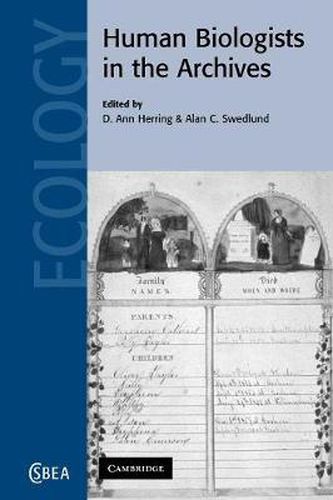Readings Newsletter
Become a Readings Member to make your shopping experience even easier.
Sign in or sign up for free!
You’re not far away from qualifying for FREE standard shipping within Australia
You’ve qualified for FREE standard shipping within Australia
The cart is loading…






Many physical anthropologists study populations using data that come primarily from the historical record. For this volume’s authors, the classic anthropological ‘field’ is not the glamour of an exotic locale, but the sometimes tedium of the dusty back rooms of libraries, archives and museum collections. This book tells of the way in which archival data inform anthropological questions about human biology and health. The authors present a diverse array of human biological evidence from a variety of sources including the archaeological record, medical collections, church records, contemporary health and growth data and genetic information from the descendants of historical populations. The papers demonstrate how the analysis of historical documents expands the horizons of research in human biology, extends the longitudinal analysis of microevolutionary and social processes into the present and enhances our understanding of the human condition.
$9.00 standard shipping within Australia
FREE standard shipping within Australia for orders over $100.00
Express & International shipping calculated at checkout
Many physical anthropologists study populations using data that come primarily from the historical record. For this volume’s authors, the classic anthropological ‘field’ is not the glamour of an exotic locale, but the sometimes tedium of the dusty back rooms of libraries, archives and museum collections. This book tells of the way in which archival data inform anthropological questions about human biology and health. The authors present a diverse array of human biological evidence from a variety of sources including the archaeological record, medical collections, church records, contemporary health and growth data and genetic information from the descendants of historical populations. The papers demonstrate how the analysis of historical documents expands the horizons of research in human biology, extends the longitudinal analysis of microevolutionary and social processes into the present and enhances our understanding of the human condition.